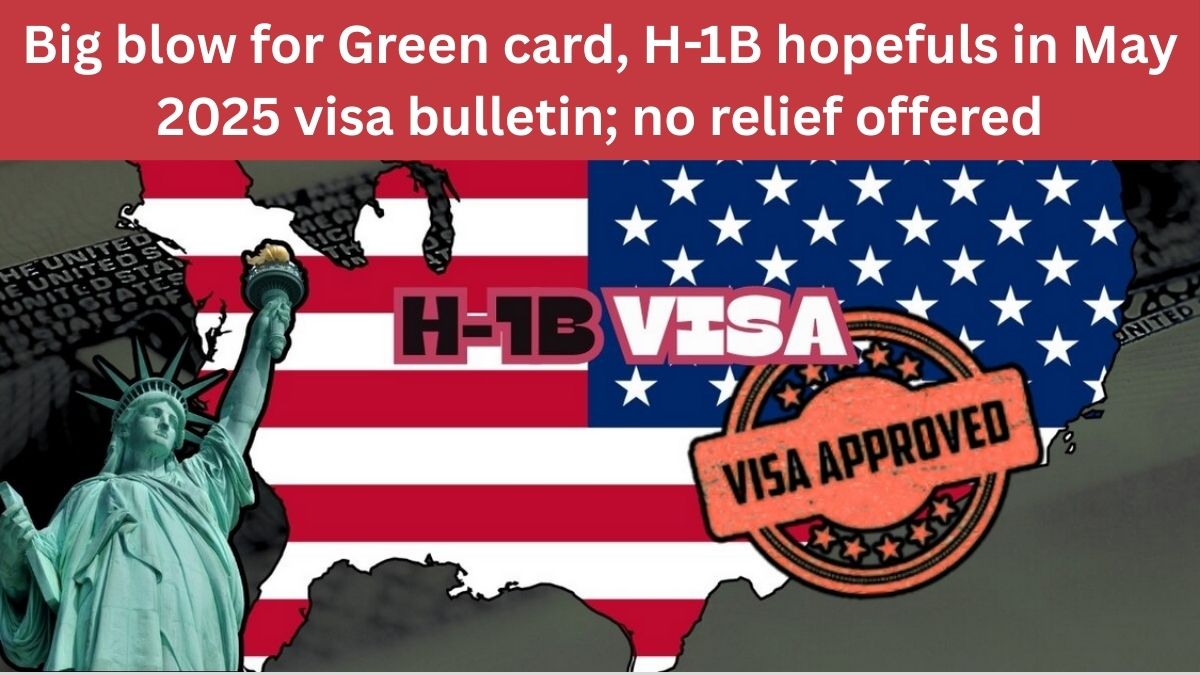The U.S. Department of State released the May 2025 Visa Bulletin, revealing significant shifts—and stagnation—across employment-based (EB) immigration categories. For many Indian applicants, particularly those pursuing green cards via the EB-5 Investor Visa or the H-1B to green card transition, the latest update delivers disappointing news.
While some categories remain unchanged, others—especially EB-5—have seen a sharp retrogression that could considerably delay green card processing for thousands of Indians.
Visa Bulletin Explained: What Do These Dates Mean?
Before analyzing the specific changes, here’s a quick refresher on how to interpret the visa bulletin:
| Section | Purpose |
|---|---|
| Final Action Dates | The priority date must be earlier than this for a green card to be issued |
| Dates for Filing | Earliest date applicants can submit adjustment of status or visa applications |
U.S. Citizenship and Immigration Services (USCIS) uses these cutoff dates to determine whether applicants can proceed with their adjustment of status based on their priority date.
EB-5 Unreserved Category for India Retrogresses Drastically
The most notable change in the May 2025 bulletin is the severe retrogression in the EB-5 Unreserved category for Indian nationals. The priority date has been pushed back by more than six months—from current to May 1, 2019.
| EB-5 Category | India | China | All Other Countries |
|---|---|---|---|
| Unreserved | May 1, 2019 | January 22, 2014 | Current |
This shift means that only Indian EB-5 applicants with a priority date before May 1, 2019, are now eligible to move forward. For others, this translates to longer wait times, additional paperwork expiration risks, and uncertainty around project funding timelines.
EB-1, EB-2, and EB-3: India Sees Little to No Movement
EB-1: No Change for India or China
India’s EB-1 category holds steady at February 2, 2022, while China’s remains at November 8, 2022. All other countries remain “Current,” meaning applicants outside India and China can proceed without delays.
EB-2: India’s Long Wait Continues
India’s EB-2 cutoff remains stagnant at January 1, 2013, marking over a decade of backlog. China stays at October 1, 2020, and other countries remain at June 22, 2023.
EB-3: Slight Progress for India
There’s a modest improvement for Indian applicants under EB-3, with the cutoff advancing to April 15, 2013. This is the only forward movement India sees in this month’s bulletin.
| Category | India | China | All Other Countries |
|---|---|---|---|
| EB-1 | Feb 2, 2022 | Nov 8, 2022 | Current |
| EB-2 | Jan 1, 2013 | Oct 1, 2020 | June 22, 2023 |
| EB-3 | Apr 15, 2013 | Nov 1, 2020 | Jan 1, 2023 |
| EB-3 Other Workers | Apr 15, 2013 | Apr 1, 2017 | May 22, 2021 |
EB-4 Category Remains Closed Across the Board
The EB-4 (Special Immigrants) category is listed as “Unavailable” for all countries, including India and China. According to the Department of State, all available EB-4 visas for FY 2025 have been used, and the category is unlikely to reopen before October 1, 2025, when the new fiscal year begins.
Why EB-5 Retrogression Matters for Indian Investors
The EB-5 Investor Visa allows foreign nationals to obtain a green card by investing a minimum of $800,000 in qualifying U.S. projects. However, with India’s high demand and per-country visa caps (around 7% of the 9,800 global EB-5 quota), bottlenecks are inevitable.
The retrogression back to 2019 is significant because:
-
Applicants with post-2019 priority dates will now wait several more years to progress.
-
Document re-filing and medical exams may expire, adding costs and delays.
-
Investors in active projects face uncertainty regarding project timelines and return on investment.
Strategic Advice for Green Card and H-1B Applicants
Whether you’re an H-1B visa holder aiming for permanent residency or an EB-5 investor, the current bulletin underscores the need for strategic planning:
-
File early: Even a few months’ delay in filing can result in years of wait due to retrogression.
-
Consult with immigration attorneys: Policy changes and cutoffs require expert interpretation for optimal outcomes.
-
Track visa bulletins monthly: Movement in final action dates can happen without warning.
-
Explore alternate categories or countries: If timelines are critical, other immigration routes or countries may be faster.
Frequently Asked Questions
Q1. What does the May 2025 Visa Bulletin mean for Indian EB-5 applicants?
A: Only those with priority dates before May 1, 2019, can proceed. Others must wait for the date to advance in future bulletins.
Q2. Why is the EB-4 category unavailable?
A: All EB-4 visas for FY 2025 have been issued. The category is expected to reopen on October 1, 2025, with the start of the next fiscal year.
Q3. How is EB-3 performing for Indian applicants?
A: EB-3 India saw a slight forward movement to April 15, 2013, providing limited relief.
Q4. Is there any positive movement in EB-1 for India?
A: No, the EB-1 cutoff for India remains unchanged at February 2, 2022.
Q5. Can USCIS still accept adjustment of status applications?
A: Yes, USCIS will accept employment-based adjustment of status applications for applicants with priority dates earlier than the listed Final Action Dates.
Click here to know more.
Kishan is a knowledgeable writer specializing in agriculture and the latest government job recruitments, delivering clear and insightful content to inform and empower readers.

